
Mad Catz M.M.O.TE Review
Manufacturer: Mad CatzUK price (as reviewed): £54.99 (inc VAT)
US price (as reviewed): $54.01 (ex Tax)
Gaming is predicted to expand quite a bit over the next few years and a lot of this revenue will come to the PC industry, in particular the eSports market. It's little wonder, then, that peripheral manufacturers are tripping over themselves to cover every base, especially when it comes to the MMO and MOBA players. We've previously looked at two excellent mice aimed at this area of the market - Corsair's Scimitar RGB and Aorus's Thunder M7 - both of which sported great ergonomics and a mass of programmable buttons as well as software that allowed you to tweak all their assignments plus dish out macros.
Click to enlarge
Mad Catz has a couple of efforts at creating a similar mouse and the M.M.O. TE - TE standing for Tournament Edition - undercuts both the aforementioned mice by quite a bit, retailing for £54.This is £16 cheaper than the fantastic Corsair Scimitar for example. The most obvious thing the M.M.O TE lacks is RGB lighting - something that's present in abundance with the Corsair mouse - but, thankfully, the few illuminated sections that are present are very handy, such as the four-LED DPI setting indicator or mode light, which are both located to the left of your index finger on a small wing.
Click to enlarge
The lack of any other lighting, particularly for the 12 thumb buttons, could potentially hamper their use, especially in the break-in period when you're getting used to the mouse, but we'd imagine that most people would want to be able to use it from touch anyway. However, the thumb buttons do pose a couple of issues.
They're nowhere near as comfortable to use as those on the Scimitar, and project out at various angles. This may aid creating a brain map of the area, but it also meant that it was quite difficult to depress some of the buttons. We found the Scimitar was much easier to use out of the box in addition to being far more pleasant to use as an everyday mouse as well.
Thankfully, the M.M.O.TE does have a pair of buttons configured as standard thumb buttons out of the box, although it wasn't too do difficult to reassign the Scimitar's buttons to perform the same task. The mouse is extremely flat too and rather short, which means that palm grip users should look elsewhere - claw and fingertip grip users will likely find it relatively pleasant, but there are some niggles with other areas of comfort too. The two right-most buttons in the array have quite pointy edges and these can snag on your palm, which is quite uncomfortable.
In a similar fashion, a ring finger button located under the right mouse button, has a sharp tip too that again doesn't feel particularly nice - made worse by the fact the button is very thin and wobbly. There's a single DPI toggle switch, so you're forced to cycle up through the four different DPI settings instead of up or down as with the Aorus and Corsair offerings and the button is very stiff too. All this makes the M.M.O.TE a bit of a mixed bag as far as comfort and ease of use are concerned.
Click to enlarge
Thankfully, the mouse is built relatively well and does feature a vast array of buttons. There are 20 in total, including 12 thumb buttons, a mode button, two standard Omron switch-equipped mouse buttons, scroll wheel button, two blue buttons inset into the standard buttons plus the DPI switch and ring finger button.
The scroll wheel is particularly quiet but as a result it did reveal some strange squeaking sounds during aggressive scrolling. The DPI toggle switch, while being tricky to depress, is well-placed behind it and isn't quite as much of a reach as those on the Scimitar.
Click to enlarge
Despite this, the M.M.O.TE is particularly light at just 100g - 47g lighter than the Scimitar - perhaps too light for some, although it feels heavier in your hand, especially on material-based mouse mats perhaps due to the below average amounts of Teflon sitting between the mouse and your desk. The cable stands at 1.8m and is fully braided.
The 8,200 DPI laser doppler sensor performed well on all the surfaces we tried, including black material mouse mats and glossy desks, with claimed maximum speed detection of 6m/sec (240in/sec) and up to 50G of acceleration, along with between 0.2mm and 1mm lift-off detection. It's probably a subjective observation, but we did prefer the optical sensor of the Scimitar, which we felt at home with from the outset - the laser sensor here took a bit of getting used to, feeling slightly different.

MSI MPG Velox 100R Chassis Review
October 14 2021 | 15:04

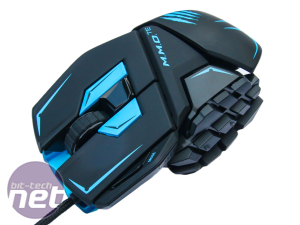
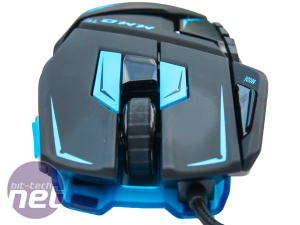
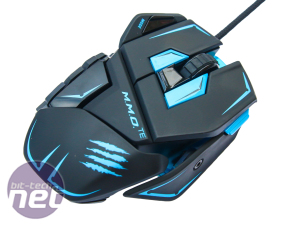
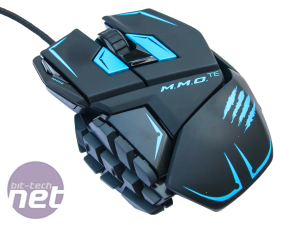

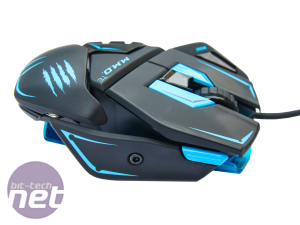
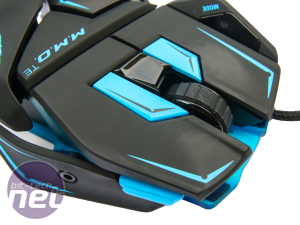
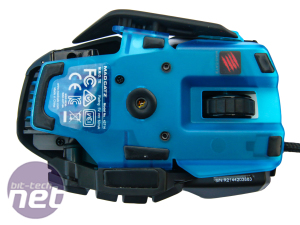
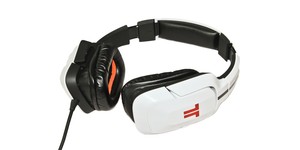
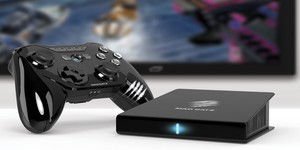





Want to comment? Please log in.